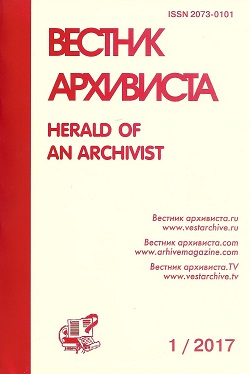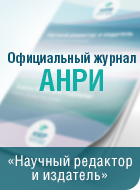| 06 August 2010
Posted in
Archival funds and collections
Annotation / Аннотация
В статье анализируются протоколы заседаний Музейной секции Государственного института истории искусств, посвященные деятельности Гатчинского музея в первой половине 1920-х гг. Этот новый источник по истории музейного дела в России позволяет на конкретном примере выявить основные подходы к решению вопросов о целях и задачах музея в условиях новой власти.
The article is devoted to minutes of the meetings of Museum’s breaking group of State Institute of History of the Art concerning activity of the Gatchina palace-museum in first half of 1920th. This new source on history of museums in Russia gives an opportunity for a good case study for an analysis of goals and purposes of museums in the context of new regime.

Keywords / Ключевые слова
Музей, музеология, выставка, экскурсия, архивные документы. Museum, museology, exhibition, excursion, archive documents.
In the publication attempt on the basis of the remained sources is undertaken to show one of stages of development of museum business in Russia in the first postrevoluctionary decade ? formation and development of the Gatchina’s palace-museum. Without giving, certainly, a full picture of development of a museum, reports allow to allocate the most important directions in its activity and the basic points of view, expressing experts-art dealers, is rather more whole, problems and specificity of new "Soviet" museums.

As it is known, the State institute of history of arts (Zubovsky institute) has been based under the initiative of count V.P.Zubov in 1912, and in 1916 has been transformed to a higher educational institution. In in 1920th was, according to D.S.Lihachev, one of the centers of intellectual life of Petrograd-Leningrad. The institute consisted of variety of the profile branches which activity the Committee of sociological studying of art created in 1924 should coordinate. As it was marked in the institute charter, it was in conducting Central administrative board of scientific, scientifically-art and museum establishments Narkompros of RSFSR. And into its purposes entered: scientific research in areas of history of sociology and the theory of all art forms, studying from the scientific party of all questions of art criticism caused by the state requirements, preparation of science officers on all disciplines studied at institute, popularization of scientific knowledge in the field of these disciplines. The sociological committee should unite “scientific work of all departments of institute in the field of art sociology”.

In the beginning of 1925 at this committee the special Museum section has been created. Its chairman was outstanding russian antiquity historian and museum figure Oscar Ferdinandovich Valdgauer. As remembered subsequently its colleagues on institute, the section and has arisen “in a close circle of adherents and O.F.Valdgauera's pupils”. Acting at the first session of its presidium, the chairman has short depicted the program of activity of new section, having noted: “new public conditions demand new receptions of the museum building, new methods in a material exposition at what the sociological moment should be considered. Application of sociological principles in museum business demands care and attention and obliges to preliminary thorough study of these questions. The problem put on a waiting list cannot be solved proceeding from theoretical preconditions; she demands practical studying of a cash museum material”.

The section discussed the questions connected with an operational experience of foreign museums, studying of the museum visitor, excursion activity, use in museum work of archival materials, but first of all its attention has been concentrated to studying of historic-household museums of Leningrad and its suburbs. The important place in this studying was occupied with largest of suburban museums of that time - the Gatchina’s palace-museum.
At the initiative of A.N.Benua, addressed to museum conference with speech about suburban palaces museums, «which had for an object to plan communication between suburbs», Gatchina was supposed to be used as a place for the organization of gallery of historical portraits.














